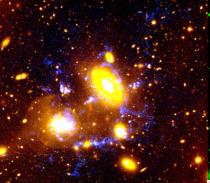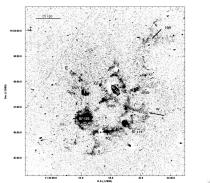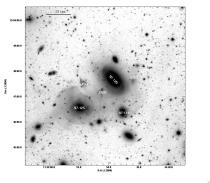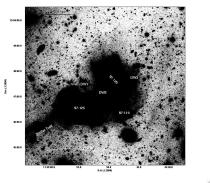|
Authors:
L.Cortese, G.Gavazzi, A.Boselli, P.Franzetti, R.Kennicutt, K.O'Neil, S.Sakai
|
|
Abstract:
We present a multiwavelength analysis of a compact group
of galaxies infalling at high speed into the dynamically young cluster Abell 1367.
Peculiar morphologies and unusually high Halpha emission are associated to two giant
galaxies and at least ten dwarfs/extragalactic HII regions, making this group the region
with the highest density of star formation activity ever observed in the local clusters.
Moreover Halpha imaging observations reveal extraordinary complex trails of ionized gas behind
galaxies with projected lengths exceeding 150 kpc. These unique cometary trails mark the
gaseous trajectory of galaxies, witnessing their dive into the hot cluster intergalactic medium.
Under the combined action of tidal forces among group members and of ram-pressure by the cluster
ambient medium the group galaxies were fragmented and the ionized gas was blown out of them.
The properties of this group suggest that environmental effects within infalling groups may have
represented a preprocessing step in the galaxy evolution during cluster assembling
at higher redshift.
|







